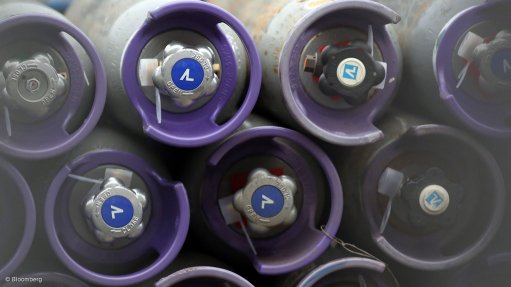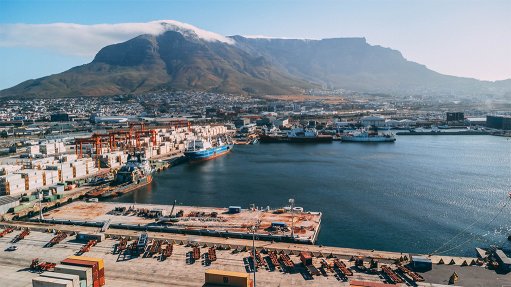DTI calls for more to be done to boost local manufacturing
Significant successes characterise the national industrial effort but much more needs to be done to achieve the required scale and a higher impact industrial policy, Department of Trade and Industry (DTI) chief director Nigel Gwynne-Evans told delegates at the Manufacturing Indaba, in Durban, on Tuesday.
He said this not only meant that government must secure greater policy certainty, coherence and programme alignment across departments and State-owned enterprises, but that there was also a need for a much stronger collaborative effort with the private sector in mutually beneficial programmes.
Gwynne-Evans pointed out that the Manufacturing Indaba was taking place against a background of increasingly uncertain and volatile global economic conditions. The global commodity slump, the collapse in the oil price, the steel crisis, great volatility in financial markets and currencies and weakened demand had impacted on developing economies, including South Africa.
The current drought in Southern Africa had exacerbated this, contributing to the contraction in South Africa’s growth rate.
The recent publication of government’s Industrial Policy Action Plan (Ipap) 2016/17 had emphasised that serious economic headwinds made it an imperative for South Africa to address deep-seated structural problems in its domestic economy, he outlined.
Key factors that needed to be addressed included growing value-added manufacturing, supporting the diversification of the economy, building important linkages between the primary minerals and agricultural sectors and the manufacturing sector, breaking the domestic economy’s dependence on exporting resources, maximising the benefits of a robust services sector to support the production sectors of the economy, moving to a less energy- and carbon-intensive growth path and addressing deep-seated and racially skewed patterns of ownership.
This was not easy and the implementation of a “laser-focussed industrial strategy” encompassing a complex set of policy tools was required, said Gwynne-Evans.
He added that the Ipap had consistently advanced the need for a collaborative, problem-solving approach to domestic factors constraining economic growth, and the need for development- and investment-friendly regulation and measures to combat red-tape hurdles for business.
Gwynne-Evans pointed out that the practical experience gained through implementing industrial policy had taught the DTI that, where industrial policy was well designed, the subject of sustained engagement with key stakeholders in the private sector and well-resourced, significant progress and positive economic outcomes could be achieved.
For example, after many years of decline, the clothing and textile sector was stabilising. The support of the retail industry and the work of the clusters driving local supply chains linking textile companies, apparel manufacturers and retailers was critical.
Government’s Production Incentive had supported 467 companies and created 4 729 jobs.
In leather and footwear, 22 new factories had opened during the past two financial years and 6 000 new jobs had been created.
Another success story, Gwynne-Evans said, was the automotive sector, which had proved remarkably resilient despite adverse global economic conditions. About R7.9-billion in investment incentives had been approved and, while government critics argued that the costs were high and insufficient localisation had been achieved, the fate of the Australian automotive sector was an example of what would happen without government support.
“The withdrawal of incentive support by the Australian government has resulted in the closure of the last production and assembly facility in Australia. Without the presence of original-equipment manufacturers (OEMs) in South Africa, there would be no supply chain, no supplier development, no black empowerment and no skills and technology spillover effects.
“There would be no exports and the vehicle import effect on the balance of trade [would be] seriously deleterious,” he averred.
Gwynn-Evans said Ipap 2016/17 identified a number of key focus areas for South Africa’s ongoing reindustrialisation effort.
It was imperative that South Africa leveraged the devalued currency and existing capabilities. “It is a well documented fact that the economic and employment multipliers which arise from exports are significant. However, our export basket remains too small and concentrated on primary products.
“But the fact that vehicle exports now account for 14.7% of exports demonstrates what can and must be done to ensure that value-added exports break South Africa’s dependence on commodity exports. We believe that this effort should focus on global OEMs, existing exporters and those companies that can achieve export readiness, especially in key value-chains such as automotive, rail, electrotechnical equipment and white goods, Gwynne-Evans pointed out.
He also noted that procurement was probably government’s strongest policy instrument and that his department was working with State-owned enterprises to promote localisation.
He added that, in terms of Ipap 2016/17, it was important that strategic collaboration ensured that South African companies did not get “left behind” when it came to the fourth industrial revolution and that they had access to the expertise and technology necessary to be globally competitive.
Comments
Press Office
Announcements
What's On
Subscribe to improve your user experience...
Option 1 (equivalent of R125 a month):
Receive a weekly copy of Creamer Media's Engineering News & Mining Weekly magazine
(print copy for those in South Africa and e-magazine for those outside of South Africa)
Receive daily email newsletters
Access to full search results
Access archive of magazine back copies
Access to Projects in Progress
Access to ONE Research Report of your choice in PDF format
Option 2 (equivalent of R375 a month):
All benefits from Option 1
PLUS
Access to Creamer Media's Research Channel Africa for ALL Research Reports, in PDF format, on various industrial and mining sectors
including Electricity; Water; Energy Transition; Hydrogen; Roads, Rail and Ports; Coal; Gold; Platinum; Battery Metals; etc.
Already a subscriber?
Forgotten your password?
Receive weekly copy of Creamer Media's Engineering News & Mining Weekly magazine (print copy for those in South Africa and e-magazine for those outside of South Africa)
➕
Recieve daily email newsletters
➕
Access to full search results
➕
Access archive of magazine back copies
➕
Access to Projects in Progress
➕
Access to ONE Research Report of your choice in PDF format
RESEARCH CHANNEL AFRICA
R4500 (equivalent of R375 a month)
SUBSCRIBEAll benefits from Option 1
➕
Access to Creamer Media's Research Channel Africa for ALL Research Reports on various industrial and mining sectors, in PDF format, including on:
Electricity
➕
Water
➕
Energy Transition
➕
Hydrogen
➕
Roads, Rail and Ports
➕
Coal
➕
Gold
➕
Platinum
➕
Battery Metals
➕
etc.
Receive all benefits from Option 1 or Option 2 delivered to numerous people at your company
➕
Multiple User names and Passwords for simultaneous log-ins
➕
Intranet integration access to all in your organisation


















